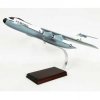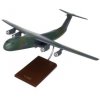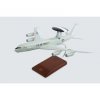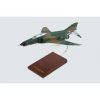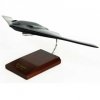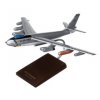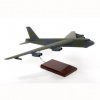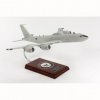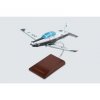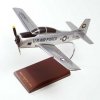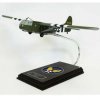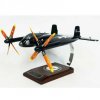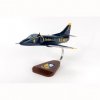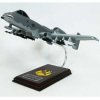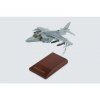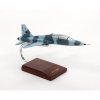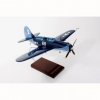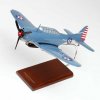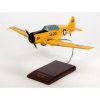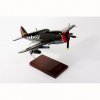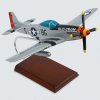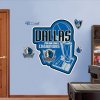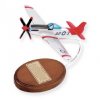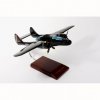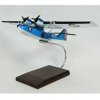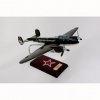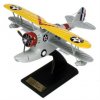"The F15A Eagle sometimes called “YF-15A”. There were 384 F15As that were built in history including 18 full scale development aircrafts. The serial number of the first produced F-15A was 71-0280 and it was used in the ceremony in St. Louis way back June 26, 1972. The F15A made its first flight on July 27, 1972 by company test pilot Irving Burrows. On March 1973, there was a production of thirty F15A and B aircrafts. The first F15, TF-15A 73-0108 was for an operational USAF unit. The said F15 was a replacement training unit for F15 operations during the first stage of the introduction of the Eagle into service. Winter of year 1974 to 1975, McDonnell altered the F-15A serial number 72-0119 to set the world time in order for him to climb records. The said project was called Streak Eagle. To rid of some weight for this project, all non important systems were deleted including the flap, speed brake, armament, radar and fire control system. The paint of the F15A was also ripped of, resulting a bare metal aircraft. The F-15A was 1800 pound less than the others. This F15A which was produced by the Streak Eagle project is now on outdoor display at the USAF Museum inside the Wright Patterson AFB in Dayton, Ohio. The F15A’s that were received by the USAF were used for testing. The testing of F15A went smoothly though there were structural changes including a notched stabilator and rake wingtips for production aircraft. The USAF ordered more 350 F15A models for their operational service. The F15A models were also used by Israel, Japan and Saudi Arabia. "
Scale: 1/48 scale model
Wing Span: 11.25
Length: 16
CF015T
|
"The Boeing C-17 Globemaster III is the newest, most flexible airlift aircraft to enter the United States and Western Air Forces. This aircraft is designed to fulfill airlift needs well into the next century - carrying large combat equipment and troops or humanitarian aid across international distances directly to small austere airfields anywhere in the world. The C-17 is also able to perform theater airlift and airdrop missions when required. The C-17 takes its name from two previous heavy lifter aircraft, the C-74 Globemaster and the C-124 Globemaster II. In January 1995, the Air Force declared the first C-17 squadron operational. Since then the fleet has amassed more than 200,000 flying hours. In May 1995, the C-17 received the prestigious Collier Trophy, symbolizing the top aeronautical achievement of 1994. In 1998, eight C-17s completed the longest airdrop mission in history, flying more than 8,000 nautical miles from the United States to Central Asia, dropping troops and equipment after more than 19 hours in the air. In February 1999, President Bill Clinton presented the Malcolm Baldrige National Quality Award for business excellence to Boeing Airlift and Tanker Programs, maker of the C-17. During normal testing, C-17s set 22 world records, including payload to altitude time-to-climb and the short takeoff and landing mark, in which the C-17 took off in less than 1,400 feet, carried a payload of 44,000 pounds to altitude, and landed in less than 1,400 feet. "
Scale: 1/164 scale model
Wing Span: 12.25
Length: 12.75
CC017T
|
"The C-21A is a military variant of the Learjet 35A business jet. It is a twin turbofan engine aircraft for cargo and passenger airlift and is also capable of transporting litters during medical evacuations. In April 1984, the delivery of the C-21A fleet began and was completed in October 1985 for deployment. On April 1, 1997, all continental US-based C-21s were realigned under Air Mobility Command, with the 375th Airlift Wing at Scott Air Force Base, Ill. as the lead command. C-21s stationed outside the continental United States are assigned to theater commanders. The C-21A has a maximum speed of 530 mph and a maximum range of 2,306 miles. It has a crew of two, a pilot and a co-pilot. The C-21A has a capacity of carrying eight passengers. The aircraft is equipped with an automatic navigation system and four cathode ray tubes display for enhanced pilot crew efficiency. There are 38 C-21As in active duty with the Air Force. "
Scale: 1/48 scale model
Wing Span: 9.5
Length: 12
CC021ATR
|
"The C-141 Starlifter, also known as “Hanoi Taxi”, was manufactured by Lockhead Corporation. This military strategic airlift aircraft was the world's first turbofan-powered transport and it served as a major component of the U.S. strategic airlift force since it entered operational service in 1965. The aircraft recorded more than 10.6 million operational hours in over four decades of service. In 2005, Hanoi Taxi was one of the aircraft marshaled by the Air Force to provide evacuation for those seeking refuge from Hurricane Katrina. This aircraft and others evacuated thousands of people, including the medical evacuation (MEDEVAC) of hundreds of ill & injured. At the end of its career as at the beginning, this aircraft brought Americans out of a hostile environment and back to safety. On May 6, 2006 at 9:30 AM, the Hanoi Taxi touched down for the last time and was received in a formal retirement ceremony at the National Museum of the United States Air Force, located at Wright Patterson Air Force Base (WPAFB) in Riverside, Ohio near Dayton. Hanoi Taxi is now part of the permanent static display collection of the Museum. "
Scale: 1/104 scale model
Wing Span: 19.25
Length: 20.25
CC141HT
Pre-Order! Available: 2nd Quarter, 2025
|
"After the inauguration of President John F. Kennedy, his first official act was the ordering of the development of an all-jet transport to extend the reach of US military forces. The new aircraft was to replace slower piston-engined cargo planes such as the Douglas C-124 Globemaster II. The Lockheed C-141 Starlifter was the result of this requirement. It served with the United States Air Force (USAF) as a military strategic airlifter and first flew in 1963. It was the first jet aircraft designed to meet military standards as a troop and cargo carrier. Operated by the Air Mobility Command (AMC) of the USAF, the C-141 can airlift and airdrop equipment, supplies and paratroops, whether at low or high altitudes. A total of 285 planes have been built, 284 for the Air Force and one for NASA. The Starlifter, which was designed to meet both military and civilian airworthiness standards, was the workhorse of the AMC. It fulfilled a vast array of requirements, including airlifting combat forces over long distances, re-supplying employed forces and providing rapid transfer of the sick and wounded from remote areas overseas to hospitals in the United States. The C-141 had an all-weather landing system, pressurized cabin and crew station. Rollers in the aircraft floor allowed quick and easy cargo pallet loading. When palletized cargo was not being carried, the rollers could be turned over to leave a smooth, flat surface for loading vehicles. Later on it was discovered that the Starlifter's volume capacity was relatively low in comparison to its lifting capacity, generally running out of physical space long before it reached its weight limit. To correct the deficiencies and utilize the aircraft to the fullest of its capabilities, 270 C-141As were stretched by about one third, adding needed payload volume. The new variant was designated C-141B. Increasing the aircraft's cargo capacity was the equivalent of buying 90 new planes. The C-141B also had in-flight refueling capability, which allowed longer non-stop flights and fewer fuel stops during worldwide airlift missions. "
Scale: 1/100 scale model
Wing Span: 19.25
Length: 20.25
CC141T
|
The USAF's C-27 Spartan is a twin turboprop engine aircraft modified from the G222 airframe manufactured in Naples, Italy, by Alenia, S.P.A. Chrysler Technologies Airborne Systems, Inc. and is modified by installing upgraded navigation, communication and mission systems required for C-27A operation.
Scale: 1/72 scale model
Wing Span: 15.75
Length: 11.5
CC27ST
|
"The C-32A is a specially configured version of the Boeing 757-200 intercontinental airliner, selected along with the C-37A to replace the aging fleet of VC-137 aircraft. Active-duty aircrews from the 1st Airlift Squadron, 89th Airlift Wing at Andrews Air Force Base, Md., fly the aircraft. The contract was awarded for the C-32A in August 1996. By using commercial off-the-shelf acquisition practices, a new record has been set from contract award to aircraft delivery – in less than two years. The C-32A is the first military aircraft ever to be acquired in this manner. The 89th Airlift Wing acquired the first of four aircrafts in 19 June 1998, and the second aircraft arrived in Andrews three days later. The remaining two C-32As arrived in November and December. The C-32A is configured for 45 passengers and 16 crews, and was designed for a 4,150 nautical mile mission, roughly the distance from Andrews to Frankfurt, Germany. The aircraft is also Stage III noise level compliant. Inside the C-32A, communications are paramount. The heads of the state and other decision-makers can conduct business anywhere around the world. The C-32 has state-of-the-art avionics equipment. The C-32A is far more fuel efficient and quieter than the 707-based C-137s they are replacing. Each engine of the C-32A has 40,000 pounds of thrust, compared to the VC-137 engine that delivers 14,000 pounds. Yet, the C-32A's high-bypass-ratio engines, combined with an advanced wing design, help make the plane one of the quietest, most fuel-efficient jetliners in the world."
Wing Span: 19
Length: 19
CC37T
|
"The C-40B was built for the U.S. Air Force as a military version of the Boeing 737-700 Boeing Business Jet. The aircraft was created to replace the aging fleet of the C-137 aircraft for U.S. combatant commanders and other government leaders. The Air Force awarded the medium lift contract in August 2000. The 89th Airlift Wing acquired its first C-40B aircraft in December 2002. The aircraft is based in Andrews Air Force Base, Maryland. The 15th Airlift Wing, Hickam AFB, Hawaii acquired its C-40B for U.S. Pacific Command in February 2003. The C-40B is created to be an ""office in the sky"" for senior military and government officials. The C-40Bs are equipped with the Connexion by Boeing system, providing secure in-flight broadband connectivity -- data/video transmit and receive capability -- to enhance communications, productivity and security. This gives U.S. military officials the ability to conduct business anywhere around the world by using on-board Internet and local area network connections, telephones, satellites, television monitors, facsimile and copy machines. The C-40B has a computer-based passenger data system."
Scale: 1/100 scale model
Wing Span: 14
Length: 13.25
CC40BTR
|
"The Boeing E-3 sentry is a military airborne warning and control system (AWACS) aircraft that provides all-weather surveillance, command, control and communications to the United States, United Kingdom, France, NATO and other air defense forces. The E-3 offers superior surveillance capabilities. The E-3 Sentry is a modified Boeing 707-320B Advanced Commercial Airframe. It is a militarized version of the Boeing 707-320B commercial jetliner airframe. The USAF E-3 fleet completed its largest upgrade which is the Block 30/35 Modification in 2001. The four enhancements were the Electronic Support Measures (ESM) for passive detection, Joint Tactical Information Distribution System (JTIDS) to provide secure, anti-jam communication, memory capability enhancement in the computer and Global Positoning System (GPS). E-3 Sentry aircraft were among the first to deploy during Operation Shield where they immediately established an around-the-clock radar screen to defend against Iraqi forces. In its strategic defense role, the E-3 provides the means to detect, identify, track and intercept airborne threats. The E-10 MC2A, based upon the Boeing 767-400ER airframe, was intended to replace the United States operated E-3 (along with the RC-135 and the E-8 Oint STARS), but budget cutbacks have clouded its future. Production ended in 1992 after 68 had been built. "
Scale: 1/100 scale model
Wing Span: 17.5
Length: 18.5
CE3AT
|
"The supersonic long-range all-weather F-4 Phantom II was designed for the United States Navy (USN) by McDonnell Douglas. It first entered service in 1960. During the Vietnam War, it was the primary air superiority fighter and a workhorse fighter-bomber for the US Air Force (USAF), Navy and Marine Corps. By 1963, it had been adopted by the USAF for the fighter-bomber role. When production ended in 1981, a total of 5,195 F-4s had been built, making it the most numerous American supersonic military aircraft. In 2000, over 1,000 units were in service with 11 nations worldwide. Innovations in the F-4 included an advanced pulse-doppler radar and extensive use of titanium in the airframe. It could carry up to 8,480 kg of weapons such as air-to-air and air-to-ground missiles, as well as unguided, guided and nuclear bombs. The F-4E is the leading Phantom model, with 1,389 planes built. It took its maiden flight on June 30, 1967. The F-4E had an additional fuselage fuel tank, leading-edge slats for increased maneuverability, an improved engine, and an internally mounted 20 mm multibarrel gun with an improved fire-control system. The slats, weapons and radar controls were optimized for dogfighting, thus improving the aircraft's air-to-air capabilities. In air combat, the F-4's greatest advantage was its thrust, which permitted a skilled pilot to engage and disengage from the fight at will. Due to its distinctive appearance and its widespread service with various militaries, the F-4 is one of the best known icons of the Cold War. It performed well in the Vietnam War and Arab-Israeli conflicts, with F-4 crews achieving 393 aerial victories and completing countless ground attack sorties. The Phantom II has the distinction of being the last US fighter to attain ace status in the 20th century. It has also set 16 world records, and was the only aircraft used by both the USAF Thunderbirds and the USN Blue Angels. "
Scale: 1/48 scale model
Wing Span: 10
Length: 16.5
CF004ACT
|
"The long range, multi-role B-1 Lancer began as a replacement for the B-52 Stratofortress in the 1960s. It carries the largest payload of both guided and unguided weapons in the United States Air Force (USAF) inventory. The supersonic strategic bomber can rapidly deliver large quantities of precision and non-prescision weapons against any adversary to any location at any time. Although officially nicknamed the “Lancer”, B-1 crews prefer to call it the “Bone”. The origins of this nickname seem to have come from an early newspaper article about the aircraft, wherein its name was phonetically spelled out as “B-ONE”. The B-1B production version first flew in October 1984 and has been in service with the USAF since 1986. It is an improved variant initiated in 1981 by the Reagan administration. Major changes included additional structure to increase payload by 74,000 pounds, an improved radar and a radar cross section reduction. The B-1B's blended wing/body configuration, variable-geometry wings and turbofan afterburning engines all contribute to its long range, maneuverability, high speed and survivability. Its offensive avionics system allows tracking, targeting and engaging moving vehicles as well as self-targeting and terrain-following modes. The final B-1B was delivered on May 2, 1988. The B-1B was first used in combat during Operation Desert Fox in Iraq in December 1998. In 1999, six aircraft were used in Operation Allied Force, delivering more than 20 percent of the total ordnance while flying less than 2 percent of the combat sorties. B-1Bs were also deployed in support of Operation Enduring Freedom, dropping almost 40 percent of the total tonnage during the first six months. All of this was accomplished while maintaining an impressive 79 percent mission capable rate. "
Scale: 1/100 scale model
Wing Span: 16
Length: 17.5
CB1TR
|
"The B-2 Spirit aircraft began as a black project identified as High Altitude Penetrating Bomber. Then it became the Advanced Technology Bomber, utilizing the code Senior Cejay. Afterwards, it became the B-2 Spirit. In 1980’s, 23 billion dollars were spent secretly for studies and advancement of the aircraft. In 1985, the aircraft became a low altitude bomber from a high altitude bomber, which they spent an extra cost for. The B-2 was in service in three operations. Its first appearance was in the Kosovo War in 1999. It first brought the satellite guided JDAM in operations. Because of that, it was used in Operation Enduring Freedom in Afghanistan and in Operation Iraqi Freedom. The B-2 is extremely computerized. And unlike those single seat fighter aircrafts, a crew can sleep inside a B-2, set his meals or use a toilet. The B-2 Spirit is a stealth heavy bomber and has the ability of organizing both nuclear and conventional armaments. It is privately operated by the United States Air Force. Its advancement was a highlight in the upgrading program of the United States Department of Defense. The B-2 aircrafts 2nd generation stealth technology was to assist the aircraft's penetration function to go on tremendous anti-aircraft protection. "
Scale: 1/100 scale model
Wing Span: 20.5
Length: 8
CB22TR
|
"The Northrop Grumman B-2 Spirit is a multi-role stealth heavy bomber, capable of deploying both conventional and nuclear weapons. It is operated exclusively by the United States Air Force. The B-2 Spirit or stealth bomber was developed and built by an industry team consisting of Northrop Grumman, Boeing and Vought Aircraft Industries. The B-2 started life as a black project known as the High Altitude Penetrating Bomber (HAPB), then became the Advanced Technology Bomber (ATB), and later became the B-2 Spirit. The B-2s primary mission is to attack time-critical targets early in a conflict to minimize an enemy's war-making potential. The B-2 bomber aircraft features incorporates advanced designs and technologies that make unprecedented use of composite materials, product assembly and finishing that meet extraordinary tolerances and quality standards and it doesn't use development tooling since it incorporates final production tooling implemented directly from the computer-aided design (CAD) system. The first B-2 was publicly displayed on November 22, 1988, when it was rolled out of its hangar at Air Force Plant 42, Palmdale, California, where it was built. Its first public flight was on July 17, 1989. In 1991, the USAF and B-2 industry team received the Collier Trophy. It will be unlikely that any B-2 will be placed on permanent display in the future (or anytime before airtime retirement)."
|
The first B-47E flew on 30 January 1953. Four "blocks" or "phases" of the B-47E were built, each incorporating refinements on the previous block, and also sometimes featuring production changes within a block. Older blocks were generally brought up to the specifications of later blocks as they were introduced. Early production "B-47E-Is" also known featured J47-GE-25 turbojets with 27 kN (5,970 lbf) thrust, but they were quickly changed to J47-GE-25A engines, which featured a significant improvement in the form of water-methanol injection. This was a scheme in which a water-methanol mix was dumped into the engines at takeoff, increasing mass flow and so temporarily kicking the thrust up to 32 kN (7,200 lbf). Methanol was apparently added to the water as an anti-freezing agent. The engines left a trail of black smoke behind them when water-methanol injection was on.
Scale: 1/100 scale model
Wing Span: 14.38
Length: 13
CB47T
|
"The B-52 Stratofortress is a long-range, jet strategic bomber that replaced the Convair B-36 and the Boeing B-47. Built by Boeing Aircraft CB-52G Stratofortressorporation in Wichita, Kansas, it has been operated by the United States Air Force (USAF) since 1955. Rarely called by its official name Stratofortress, it is more commonly referred to as BUFF (Big Ugly Fat Fellow). On November 23, 1945, Air Materiel Command, a former USAF command, issued desired performance characteristics for a new strategic bomber. Boeing, Consolidated Aircraft and Glenn L. Martin Company all submitted proposals, with Boeing winning the design competition. The primary nuclear-roled bomber in the USAF inventory, the B-52 was designed to reduce the overall aircraft weight in an effort to improve performance and has the longest unrefueled range of any bomber. It can carry up to 60,000 pounds of nuclear or conventional ordnance and can fly at high subsonic speeds and altitudes with worldwide precision navigation capability. The first B-52G aircraft rolled out of the production plant in the summer of 1958. The “G” model was heavier than earlier variants and had increased unrefueled range. Other changes included an enlarged nose radome, a reduced vertical fin size, a modified tail cone and removed ailerons. "
Scale: 1/100 scale model
Wing Span: 22.25
Length: 19
CB52GT
|
"The Convair B-58 Hustler was the first operational jet bomber capable of Mach 2 supersonic flight and was developed for the United States Air Force Strategic Air Command in the late 1950s. The B-58 program started in February 1949. The B-58 design was the first ""true"" USAF supersonic bomber program. Its design was based on a delta wing with a leading-edge sweep of 60 degrees with four General Electric J79-GE-1 turbojet loading. It has a crew of three, the pilot, bombardier, navigator and defensive systems operator. The B-58 carries a single nuclear weapon in a streamlined MB-1C pod under the fuselage. The B-58 has a crew of three and has a maximum speed of Mach 2.1 The B-58 is extremely expensive and was reported that each B-58As costs much more than its weight in gold. It is a complex aircraft requiring considerable maintenance, requiring specialized equipment. On January 16, 1970, the last B-58s in operational service retired and was replaced by the FB-111A. A total of 116 B-58s were produced; 30 trial aircraft and 86 production B-58A models. A number of B-58s were used for special trials of various kinds and several variants such as the B-58B and B-58C were proposed by Convair, but were never built. "
|
"The C-5 Galaxy is a strategic airlifter type of aircraft manufactured by Lockheed-Georgia Co. Its maiden flight was on the 30th of June 1968 and was introduced commercially in 1970. Its primary user was the United States Air Force and it is still operational up to this date with 52 produced aircrafts active and 42 reserved. It is one of the largest aircrafts in the world and the largest American military transport. It was designed to carry oversized cargo. The C-5A was produced during 1968 to 1973. It was the original version of the C-5 Galaxy. In 1970s a crack on its wings was found that caused its cargo weight restriction. The C-5A was redesigned to install new strengthened wings. The new set of wings is made of an aluminum alloy that didn’t exist during its first production. The C-5B was produced on 1985 to 1989.It was an improved version of the original variant of C-5 Galaxy. It allows four minimum flight crews including the Pilot, co-pilot, and two flight engineers. It has a payload of 270,000 lb; length of 247 feet 1 inches; wingspan of 222 feet 9 inches; height of 65 feet 1 inches. It has a maximum speed of Mach 0.79; cruise speed of Mach 0.77; range of 2,400 nmi; and service ceiling of 34,000 feet. Fifty new variants of C-5B were delivered to the United States Air Force from 1986 to 1989. "
Scale: 1/150 scale model
Wing Span: 18
Length: 20
CC005ET
|
"The Lockheed C-5 Galaxy is a military transport aircraft, the largest in the American military and one of the largest in the world. It was designed to carry outsize and oversize cargo, providing strategic heavy airlift over intercontinental distances. Operated by the United States Air Force (USAF), it is one of the physically largest aircraft in the world that is capable of flying on a regular basis. In 1964, design proposals for a heavy jet transport were submitted by various companies in response to a US Army requirement. The new aircraft was set to replace the Douglas C-133 Cargomaster and complement the Lockheed C-141 Starlifter. In 1965, Lockheed's aircraft design and General Electric's engine design were selected. The first C-5A Galaxy rolled out of the manufacturing plant on March 2, 1968 and the aircraft's maiden flight was on June 30. The first operational Galaxy was delivered in June 1970. The C-5 has a distinctive high T-tail and is similar in appearance to its smaller sister transport the C-141. It is equipped for aerial refueling, giving it an extended range. Nose and aft doors permit “drive-through” loading and unloading of cargo. The Galaxy is capable of carrying nearly all of the Army's combat equipment, including the 74-ton armored vehicle launched bridge, from the United States to any location in the world. In the early 1970s, the C-5 was considered by NASA for the role of Shuttle Carrier Aircraft, which was tasked to transport the Space Shuttle to Kennedy Space Center. However, the Boeing 747 was chosen instead due in part to its low-wing design. From 1981 to 1987, 77 C-5As underwent a re-winging program to increase their lifting capability and service life after wing cracks were found throughout the fleet. The redesigned wings were made of a new aluminum alloy that did not exist during the original production. "
Scale: 1/150 scale model
Wing Span: 18
Length: 20
CC005GT
|
"The C-5 Galaxy, manufactured by Lockheed-Georgia Co., is a military heavy-cargo transport aircraft designed to provide strategic airlift for deployment and supply of combat and support forces over intercontinental distances. It is the largest American military transport and one of the largest military aircraft in the world, designed to carry outsize and oversize cargo. The C-5 is operated by the United States Air Force. The C-5 Galaxy is one of the physically largest aircraft in the world with the ability to fly on a regular basis. The original version of the C-5 is the C-5A. From 1969 to 1973, 81 C-5As were delivered to US Air Forces bases. Due to cracks found in the wings in the mid-1970s, the cargo weight was restricted. To restore the plane's full capability, the wing structure was redesigned. A program to install new strengthened wings on 77 C-5As was conducted from 1981 to 1987. The redesigned wing made use of a new aluminum alloy that didn't exist during the original production. An improved version of the C-5A is the C-5B. It incorporated all modifications and improvements made to the C-5A with improved wings, upgraded TF-39-GE-1C turbofan engines and updated avionics. From 1986 to 1989, 50 of the new variant were delivered to the US Air Force. "
Scale: 1/150 scale model
Wing Span: 18
Length: 20
CC005T
|
Scale: 1/100 scale model
Wing Span: 17.5
Length: 18.5
CE6BT
|
"The T-6 Texan is a single-engine advanced trainer aircraft used to train fighter pilots of the United States Army Air Forces, United States Navy, Royal Air Force and other air forces of the British Commonwealth during World War II. The T-6 is known by a variety of designations depending on the model and operating air force such as the ""AT-6"", the ""SNJ"" and ""Harvard"". The T-6 originates from the North American NA-16 prototype which was first sloen on April 1, 1935. The T-6 originated from the American NA-16 prototype which was modified as the NA-26 and entered USAC ""Basic Combat"" aircraft competition in March 1937. Production of the first model began and there were 180 supplied to the USAAC as the BC-1 and 400 to the RAF as the Harvard I. The US Navy received 16 modified aircraft, designated as the SNJ-1, and the 61 as the SNJ-2 with a different engine. The AT-6, which was equivalent to the BC-1A was designated as the Harvard II for RAF/RCAF orders and 1,173 were supplied by purchase or Lend Lease, mostly operating in Canada. Next comes the AT-6A, based on the NA-77 design powered by Pratt & Whitney R-1340-49 Wasp radial engine. The USAAF received 1,549 and the US Navy 270 (as the SNJ-3). It has a maximum speed of 208 mph at 5,000 ft and a range of 730 miles. The Texans were put into service during the Korean War and the Vietnam War. Texans had also been a regular participant in air shows and was used in many movies. "
Scale: 1/32 scale model
Wing Span: 10.75
Length: 15.75
AT06NYT
|
"Built by Raytheon, the T-6A Texan II is a turboprop aircraft of World War II used by the U.S. Air Force and U. S. Navy for their basic pilot training. Since World War II, the Texan has been a popular war bird and is a regular participant at air shows. The T-6A Texan II was manufactured by Raytheon Aircraft Company and Hawker Beechcraft. It is a single-engine with two seats designed to be a trainer aircraft. Its primary users are United States Air Force and Navy; Canadian Forces, and Greek Air Force. It entered development flight in July 1998, production line on the 30th of July 1999, and flight test program and full rate production decision in December 2001. The T-6A was primarily designed to train JPPT or Joint Primary Pilot Training students in basic flying skills common in the United States Air Force and Navy pilots. It was a military trainer version of the Beech/Pilatus PC-9 Mk II by Raytheon. The single cockpit with two seats placed one crewmember in front of the other. The students and the instructor’s positions can be interchangeable. Pilots can enter the T-6A cockpit through a side opening. The T-6A has a Pratt and Whitney Canada PT6A-68 turbo-prop that delivers 1,100 horsepower. It is fully aerobatic aircraft with a pressurized cockpit and an anti-G system. It also has an ejection seat and advanced avionics package with sunlight-readable liquid crystal displays. Since World War II the Texan has been known as a war bird and a regular participant in air shows"
Scale: 1/32 scale model
Wing Span: 12.38
Length: 12
AT06NYTR
|
"When the United States Air Force (USAF) set out to replace the aging T-6 Texan trainer, North American Aviation (NAA) was hired to do the job. The design presented by NAA was so successful that a contract for two prototypes was awarded. The USAF was impressed with the prototypes after an evaluation and an initial flight on September 24, 1949. The new aircraft, designated the T-28 Trojan, entered prodution the following year, becoming the first all-new post World War II trainer. It had a frameless canopy and piston engine, with a top speed that often exceeded 280 mph. It was the first trainer designed to transition pilots to jet aircraft. However, plans to utilize it for both basic and advanced training had to be changed when it turned out that the speed and power of the Trojan challenged new cadets too soon. After it became evident that the Air Force had found a very successful design, the US Navy and the US Marine Corps adopted the T-28 military trainer aircraft as well. It was used by the US armed forces from the 1950s to the 1980s. The Air Force has supplied T-28 planes to the Vietnam Air Force, the Royal Laotian Air Force and the Royal Thai Air Force. The Trojan served with the USAF as a tactical fighter-bomber for counter insurgency warfare in Southeast Asia, particularly in Vietnam and Laos, and proved to be an effective close air support weapon against enemy ground forces. The T-28 was the first US attack fixed wing aircraft that was lost in South Vietnam during the Vietnam War. Captain Robert L. Simpson and Lieutenant Hoa were shot down by ground fire on August 28, 1962 while flying close air support; neither survived. The USAF lost 23 Trojans to all causes during the war, with the last two losses occurring in 1968. "
Scale: 1/32 scale model
Wing Span: 15
Length: 12.25
AT28AT
|
"The T-28 Trojan was the basic trainer for both the Navy and Air Force. Like the T-6 Texan that it replaced in the early 50s, many were converted to ground attack variants and saw action in Vietnam. The T-28 Trojan, manufactured by North American Aviation (NAA), was designed as a piston-engined military trainer aircraft. The T-28 was flown for the first time, designed to replace the T-6 Texan, on September 24 1949. The first of two prototypes was flown on September 26, 1949. Found satisfactory, a contract was issued and between 1950 and 1957. There were a total of 1,948 aircrafts built. A number of these aircraft were later supplied to Air Forces in South America and South East Asia particularly in Japan, Argentina, Thailand, Laos, Philippines, and Brazil. The Trojan, as it became known, had a frameless canopy and a Wright R-1300 engine that, when combined, and gave it a top speed that often exceeded 280 mph. First orders of 266 planes in 1950 eventually grew to 1,194. After it became evident that the Air Force had found a very successful design, the United Sates Navy and Marine Corps adopted it as well. Two years later, 489 standardized versions (T-28Bs) were ordered by the Navy, mainly differing from the T-28A in its use of the more-powerful Wright R-1820-86 engine. Following this, 299 T-28Cs were produced, which were fitted with an arrester gear for carrier-deck landing training. "
Scale: 1/32 scale model
Wing Span: 15
Length: 12.25
AT28NT
|
"The Warning Star is a US Air Force/US Navy airborne early warning radar surveillance aircraft manufactured by Lockheed, designed to serve as an airborne early warning system to supplement the Distant Early Warning Line. The RC-121D is the designation of EC-121D before 1962. The USAF operated three wings of EC-121s between 1954 and 1978. Its primary mission until the Vietnam War was to provide complementary early warning radar coverage to the Pacific and Atlantic barriers by flying orbits 300 miles offshore of the continental United States. The initial deployment of EC-121Cs began with the 551st Airborne Early Warning and Control Wing based at Otis Air Force Base, Massachusetts. The EC-121 Warning Star became operational on December 21, 1954 and was subsequently upgraded to EC-121D and later EC-121H. The EC-121s were used extensively in support of Operation Rolling Thunder and Operation Linebacker/Linebacker II, to provide radar early warning and limited airborne control of USAF fighter forces engaging MiG interceptors. The EC-121s were designed to detect aircraft flying over water and ground clutter caused interference with their radar pictures. The RC-121D has a typical flight crew of 6, with 11-25 radar crew. It has a maximum speed of 299 mph and a range of 4,250 mi. An RC-121D is currently on display at the Chanute Air Museum in Rantoul, IL. "
Scale: 1/72 scale model
Wing Span: 20.5
Length: 19.25
AVC121DT
|
The CG-4A Glider was the most widely used U.S. troop/cargo glider of WW II. Flight testing began in 1942 and eventually more than 12,000 CG-4As were procured. Fifteen companies manufactured CG-4As.
Scale: 1/56 scale model
Wing Span: 18
Length: 10
AWG
|
"The brainchild of Charles H. Zimmerman, the F5U was intended to perform well as a fighter plane while being able to remain in flight at extremely low airspeed, making it easier to operate from carriers. The F5U's unusual appearance owed to a very low aspect ratio wing without a fuselage, which resulted in something looking like a flying saucer. This shape, combined with powerful engines driving large propellers, could plow through the air at low speed (40 mph!), since the whole airframe is immersed in the prop wash. The XF5U Flying Pancake was manufactured by Vought. It was a fighter aircraft and the brainchild of Charles Zimmerman during World War II. Its maiden flight was on the 23rd of November 1942 and its production was cancelled on the 17th of March 1947. The XF5U was the most unusual aircraft designed for the U. S. Navy. It consists of a flat, somewhat disk-shaped body with a very low aspect ratio wing without fuselage that looks like a flying saucer. The Xf5U has two 1,600hp Pratt and Whitney R-2000 radial engines. Its configuration was designed to have a low aspect ratio aircraft that will have a low takeoff and landing speed and high top speed. It can accommodate only one, the pilot; it has a length of 28 ft 7 in; wingspan of 32 ft 6 in; height of 14 ft 9 in; empty weight of 13 107 lb, loaded weight of 16,722 lb. and max takeoff weight of 18,772 lb. It has a maximum speed of 425 mph; range of 1,064 miles; rate of climb 718 ft per minute; and service ceiling of 34,492 ft. It has 6 x .50 machine guns or 4 x 20 mm machine guns or 2 x 1000 lb bombs. Charles Lindbergh has successfully flown the first flight of the V-173 and he was surprised that it was easy to handle. The aircraft’s main problem was its gearbox which produces unacceptable amounts of vibration. Even the design was really promising. The U.S. Navy came to a point where they had to switch from propeller driven planes to jet propelled planes. "
Scale: 1/27 scale model
Wing Span: 14
Length: 12
AXF5U
|
"The Blue Angels chose the A-4 in the early '70s, replacing the thundering F-4. By adopting the Skyhawk, the team now had an aircraft that was much more aerobatic than before. This allowed for a tighter display and the ability to keep much of the performance in front of the audience. The A-4 Skyhawk was manufactured by Douglas Aircraft Corporation and was designed by Ed Heinemann. Its primary users are United States Navy and United States Marine Corps. Its maiden flight happened on the 22nd of June 1954 but it was introduced in 1956. The A-4 Skyhawk is a lightweight, single engine attack aircraft. It is said to be one of the most famous attack aircrafts ever designed. The short range attack and close support aircraft was originally intended for the U.S. Navy and Marine forces. The A-4F variant was a refinement of A-4E. It has extra avionics housed in a hump on the fuselage spine. Some of this variant served with Blue Angels acrobatic team during 1973 to 1986. The Blue Angels are the best U.S. military aerobatic team. They fly different kind of aircrafts including Grumman Hellcats, Bearcat, Panther, and the Skyhawk. The A-4 Skyhawk was chosen in the early 70s over F-4 as Skyhawk is said to be more fuel efficient than the Phantom. It was chosen because it was the aircraft that was more appropriate that time in the midst of an oil crisis. With the A-4 used by the team, different display was done. The Skyhawk was more aerobatic than the other aircraft. This allowed them to have a tighter display and be able to keep their performance in front of the audience. The pilots of the Blue Angels enjoyed flying the A-4 Skyhawk because it is easy to maintain and the accident rate was quite low. Eventually, there were new aircrafts that replaced the Skyhawk. It retired in 1976 for the U.S. Navy while in 1998 in U.S. Marine Corps. However it is still active in other countries."
Scale: 1/40 scale model
Wing Span: 11.75
Length: 17.25
CA04BA
|
"Manufactured by Douglas Aircraft Corporation and originally intended to operate from United States Navy (USN) aircraft carriers, the A-4 Skyhawk was designed by Ed Heinemann in response to the Navy's request for a jet-powered attack aircraft that would replace the A-1 Skyraider. Heinemann chose a design that would minimize size, weight and complexity. The result was an aircraft that weighed only half of the Navy's specification and had wings so compact that need not be folded for carrier stowage. The petite aircraft soon received the nicknames “Scooter”, “Bantam Bomber”, “Tinker Toy Bomber” and, in reference to its agility, “Heinemann's Hot-Rod”. The first prototype flew on June 22, 1954, and deliveries to the USN and US Marine Corps (USMC) began in late 1965. Production of the Skyhawk was put to a halt in 1979, and by then, a total of 2,960 aircraft had been built. The design of the Skyhawk is not uncommon among post-World War II planes. It had a delta wing, a tricycle undercarriage, a single turbojet engine in the rear fuselage and a cruciform tail. Armament included cannons and a large variety of bombs, rockets and missiles. The A-4 was the pioneer of the “buddy” self air-to-air refueling concept. This allows aircraft to supply fuel to others of the same type without the need for a dedicated tanker, and was particularly handy for small air arms or when operating in remote locations. In case of any hydraulic failure, the Skyhawk was also capable of emergency landing on drop tanks that were almost always carried by the aircraft. "
Scale: 1/32 scale model
Wing Span: 15.25
Length: 10.25
CA04MTE
|
"When the United States Navy (USN) set out to replace the piston-engined World War II-era A-1 Skyraider, the new attack aircraft needed to be all-weather and carrier-based. In 1957, the contract was awarded to Grumman, and the twin-engined A-6 Intruder was developed. The prototype made its first flight on April 19, 1960. The Intruder's career began in 1963 and would carry on for 34 more years. The A-6 was capable of low-level flying in all weather conditions, and its wings were very efficient at subsonic speeds. The aircraft's large, blunt nose and slender tail earned it a string of nicknames, including Double Ugly, The Mighty Alpha Six, Iron Tadpol, Drumstick and Pregnant Guppy. The Intruder was redesignated A-6A in the fall of 1962 and entered squadron service in February 1963. The A-6 became the Navy's and Marine Corps' principal medium and all-weather/night attack aircraft from the mid-1960s until the 1990s. The Intruder first saw combat during the Vietnam War, where it was used extensively against targets in Vietnam. The aircraft's ability to fly in any weather condition, long range and heavy payload of 8,170 kg made it invaluable during the war. However, its effectiveness in flying low and delivering its payload made it especially vulnerable to anti-aircraft fire. In the eight years that the A-6 was used during the war, the USN and USMC (United States Marine Corps) lost 84 aircraft to all causes. Ten were shot down by surface-to-air missiles, 2 were destroyed by Red Chinese Shenyang J-6s, 16 were lost to operational causes, and the remaining 56 were lost to conventional ground fire and anti-aircraft artillery. "
Scale: 1/48 scale model
Wing Span: 13.5
Length: 13.25
CA06NHVTR
|
"The A-7 Corsair II is a carrier-based subsonic light attack aircraft and was one of the first combat aircraft produced by Chance Vought. The A-7 was one of the first combat aircraft featuring a head-up display (HUD), doppler-bounded inertial navigation system and a turbofan engine. The A-7 first entered service with the US Navy during the Vietnam conflict and was then adopted by the United States Air Force. The A-7 Corsair II was nicknamed as ""SLUF"" (Short Little Ugly Feller) by pilots. The A-7s were used as a deception aircraft by the group between 1981 and 1989. The A-7B has a general ease of flying and excellent forward visibility but lacks in engine thrust. The A-7B incorporates a TF30-P-8 engine with 12,190 lbf of thrust. An A-7 donated from the National Museum of Naval Aviation at Pensacola Florida is located on the side of the road just outside Lake City, Florida. An A-7 can also be found at at Akron-Canton airport hangar at MAPS air museum in Akron, Ohio. There is also one mounted at the Atlanta Road side of Naval Air Station Atlanta in Marietta, Georgia. Another A-7 is on display at Tillamook Air Museum and another A-7 is located behind a fence in the parking lot of the Evergreen Aviation Museum in McMinnville, Oregon. There were many A-7s which survived. In 1971, A-7Bs which survived were further upgraded to TF30-P-408 with 13,390 lbf of thrust and there were 196 A-7Bs built. "
Scale: 1/40 scale model
Wing Span: 13.88
Length: 11.5
CA07NTE
|
"The A-10 Thunderbolt was manufactured by Fairchild-Republic for the United States Air Force. The A-10 is the first single-seat, twin engine jet aircraft especially designed for close air support of ground forces. A-10s are effective for ground combats, such as attacking tanks, armored vehicles, and other ground targets. It also provides a limited air interdiction role. The A-10 is more commonly known by its nickname ""Warthog"" or simply ""Hog"". The A-10 Thunderbolt took its first flight on May 10, 1972. The first A-10s produced flew in October 1975, and was delivered to the 355th Tactical Training Wing at Davis-Monthan Air Force Base, Arizona, in March 1976. The Warthog was later introduced and became operational in October 1977. A total of 715 A-10 Thunderbolt's were produced. During the Persian Gulf War in 1991, Warthogs were widely used and have shown their power as the greatest tank-killing aircraft in history. A total of 144 A-10's were deployed during the war and flew 8,624 missions with just five aircrafts lost. Pilots of the A-10's frequently flew up to three missions per day. Most aircrafts survived direct attacks from heat-seeking missiles and managed to return safely. "
|
"The American-manufactured AV-8B Harrier jet fighter of British design is on active duty with the Marines. It can take off vertically from the deck of a ship or forest clearing, and then accelerate to nearly the speed of sound. The AV-8B Harrier was a Short Take Off and Vertical Landing strike aircraft. It was manufactured by McDonnell Douglas, Boeing and BAE Systems. Its maiden flight was on the 09th of November 1978 and introduced on the 12th of January 1985. Its primary users are U.S. Marine Corps; Royal Air Force and Navy; Spanish Navy; and the Italian Navy. This aircraft was developed from Hawker Siddeley Harrier and BAE Sea Harrier. The AV-8B was a single-seat, light attack aircraft that provide offensive air support to the Marine Air-Ground Task Force or MAGTF. Its primary function was to attack and destroy surface targets under day and night visual conditions. It can operate from a variety of ships, forward sites such as roads, and many others. The AV-8B Harrier only accommodates one flight crew. It has a length of 46.3 ft; wingspan of 30.3 ft; cruise speed of Subsonic to transonic; and ferry range of 2100 nautical miles. It has armament of one fuselage-mounted 25 mm gun system; Standard air-to ground load: six Mk 82,500 pound bombs; standard air-to-air load: four AIM-9L/M sidewinder missiles; and provisions for carrying up to 9,000 pounds of ordinance on seven stations. The AV-8B tasks includes the conducting of close air support using conventional and specific weapons; to conduct deep air support; to conduct offensive and defensive antiair warfare; and many others."
Scale: 1/30 scale model
Wing Span: 12
Length: 18.4
CAH1
|
"The McDonnell Douglas AV-8B Harrier II is a family of second-generation vertical/short takeoff and landing jet multirole aircraft of the late 20th century. Developed from the earlier Hawker Siddeley Harriers, it is primarily used for light attack or multi-role tasks, typically operated from small aircraft carriers. Versions are used by several NATO countries, including the United Kingdom, Spain, Italy, and the United States. Though it shares the designation letter number with the earlier AV-8A Harrier, the AV-8B Harrier II was extensively redesigned by McDonnell Douglas. Both models are commonly referred to as the Harrier Jump-jet. The AV8B had its direct origins in a joint British-US project (Hawker-Siddeley and McDonnell Douglas) for a much-improved Harrier aircraft, the AV-16. However the British later pulled out of the program. Using things learned from AV-16 development, McDonnell continued the development work which lead to the AV-8B for the US Marine Corps. The aircraft was centered on the Marines' need for a light ground attack airplane and focused on payload and range as opposed to speed. The first Harrier IIs produced were commonly known as the Day Attack variant, and are no longer in service. Most were upgraded to Night Attack Harrier or Harrier II Plus standards, with the remainder being withdrawn from service. Several variants of the Harrier are used by four countries' military forces: the United Kingdom, the United States, Spain and Italy. The US Marine Corps has operated the AV-8B since 1985. "
Scale: 1/48 scale model
Wing Span: 7.38
Length: 11.25
CAH1TR
|
"The AT-38B Aggressor Northrop was one of the variants of the Northrop T-38 Talon, the world’s first and most produced supersonic trainer. The T-38 is still in service at present time with the Air Forces. The AT-38B Aggressor Northrop aircraft has a conventional configuration and it has a small, low, long chord wing, a single vertical stabilizer and a tricycle undercarriage. The T-38 first flew in 1959 and there were more than 1100 Talon aircrafts delivered to the Air Force from 1961 to 1972. The AT-38B Aggressor Northrop was used by the Air Educational and Training Command to prepare pilots for front line fighter and bomber aircraft such as the F-15E Strike Eagle, F-15C Eagle, F-16 Fighting Falcon, B-1B Lancer, A-10 Warthog and F/A-22 Raptor. The AT-38B Aggressor Northrop is an advanced and super sonic flight trainer aircraft which was also used as a fighter lead. It is the very first aggressor aircraft. The AT-38B was ordered by the US Air Force in 1950. The AT-38B Aggressor Northrop aircraft was much less expensive to operate because the LIFT program had reduced its cost. The LIFT program ended in 1993 when the USAF integrated the training with the UPT. "
Scale: 1/48 scale model
Wing Span: 5.5
Length: 11.25
CAT38T
|
"The AT-6 ""Texan"" advanced trainer, built by North American, is one of the most widely used aircraft in history. Also known as ""the pilot maker"", 15,495 Texans were built between 1938 and 1945. The U.S.A.A.F. procured 10,057 AT-6's; others went to the Navy as SNJ's and to more than 30 Allied nations. Most AAF fighter pilots trained in AT-6's prior to graduation from flying school. Many of the ""Spitfire"" and ""Hurricane"" pilots in the Battle of Britain trained in Canada in ""Harvards,"" the British version of the AT-6. To comply with neutrality laws, U.S. built Harvards were flown north to the border and were pushed across. In 1948, Texans still in USAF service were redesignated as T-6's. To meet an urgent need for close air support of ground forces in the Korean Conflict, T-6's flew ""mosquito missions"" spotting enemy troops and guns and marking them with smoke rockets for attack by fighter-bombers. More than 360 T-6's are still flying."
Scale: 1/32 scale model
Wing Span: 15.75
Length: 10.75
AT06AYT
|
"The Curtiss SB2C Helldiver was a single-engine, carrier-based dive bomber produced for the United States Navy (USN). It was the Navy's principal dive bomber during the latter part of World War II. Despite a reputation for being difficult to handle at low speeds, it was responsible for the destruction of more Japanese targets than any other aircraft. The Helldiver's good speed and range made it an essential tool in the far reaches of the Pacific Theater. Developed to replace the Douglas SBD Dauntless in USN service, the SB2C was able to carry a considerable array of armament and featured an internal bomb bay that reduced drag when carrying heavy ordnance. Due to demanding requirements set forth by both the Marines and the Army Air Forces, Curtiss incorporated features of a multi-role aircraft into the design. After the crashing of two prototypes, numerous modifications were specified for the production model. The size of the fin and rudder was enlarged, and fuel capacity and fixed armament were also increased. A total of 7,140 aircraft were produced during World War II. After suffering many delays due to the modifications, the Helldiver finally entered combat on November 11, 1943 on USS Bunker Hill, attacking the Japanese-held port of Rabaul in Papua New Guinea. By mid-1944, it had completely replaced the SBD. Although the SB2C had already entered naval service, it still had structural problems that forbid the aircraft crews from performing one of its main tasks, that is dive bombing in clean conditions. Following the Marianas operation in June and July of 1944, SB2C squadrons participated in the advance through the western Pacific to Okinawa and the Japanese home islands. After the Second World War, the Helldiver continued to serve in USN carrier bombing/attack squadrons until early 1949. Foreign use of the aircraft included employment by the Greek Air Force in the country's civil war of 1949, and carrier operations over Indochina by the French Navy from 1951 to 1954. It also saw service with the Royal Thai Air Force, and with France, Italy and Portugal for anti-submarine warfare. "
Scale: 1/32 scale model
Wing Span: 18.5
Length: 14
ASB2CT
|
"The Douglas SBD Dauntless, nicknamed ""Barge"", ""Clunk"" or ""Slow but Deadly"" and was the standard carrier-borne dive-bomber of the US Navy from mid-1940 until November 1943, when the Curtiss Helldiver replaced it. The SBD was gradually phased out during 1944, and the 20 June 1944 strike against the Japanese Mobile Fleet in the Battle of the Philippine Sea was its last major action as a carrier-borne aircraft. Total of nine Douglas SBD-5 Dauntless Mk 1 were received by the Fleet Air Arm under contract No. The first Dauntless, JS997, was delivered from Speke to the IAD Flight of the Royal Aircraft Establishment (RAE) in November 1943, where it carried out handling and dive bombsight tests (JS997). The Dauntless was subsequently equipped at Wittering by 787 and 700 squadrons from July 1944 till February 1946. The SBD-5 model was the standard aircraft carrier based dive-bomber of the US Navy from mid-1940 until November 1943, when it was replaced by the Curtis SB2C Helldiver. This model of SBD Dauntless was considered obsolete even before the Pacific War started, and was supposed to be retired before Pearl Harbor occurred. Needless to say this did not happen. The SBD went on to be one of the most famous dive bombers in existence (next to the Stuka), and this was mostly due to extreme luck during the Battle of Midway."
Scale: 1/32 scale model
Wing Span: 15.5
Length: 12.5
ASBDT
|
"The SPAD S.XIII was a French biplane fighter aircraft of World War I, developed by Société Pour L'Aviation et ses Dérivés (SPAD) from the earlier highly successful SPAD S.VII. It was one of the most capable fighters of the war, and one of the most-produced, with 8,472 built. The S.XIII first flew on April 4, 1917, and was delivered to the French Air Service the following month. Other Allied forces were quick to adopt the new fighter as well, and nearly half of the 893 purchased for the United States Army Air Service were still in service in 1920. The S.XIII was exported to Japan, Poland, and Czechoslovakia after the war. Famous French fighter pilots such as Georges Guynemer and Rene Fonck flew the S.XIII, as well as Italy's Francesco Baracca and the United States Army Air Service's Eddie Rickenbacker. "
Scale: 1/20 scale model
Wing Span: 15.75
Length: 12.25
ASPRTE
|
"The Texan remains a favorite trainer aircraft among warbird collectors around the world. Texans are manufactured by North American Aviation for training fighter pilots of the United States Army Air Forces, United States Navy, Royal Air Force and other air forces of the British Commonwealth during World War II. The T-6 is has many designations depending on the model and operating air force and the USAAC called it as T-6. The first AT-6 built was in 1938. It incorporates a Pratt & Whitney R-1340-AN-1 Wasp radial engine w/600 h.p. The AT-6 is fitted with a single fixed .30 cal. machine gun, used for basic aerial and air-to-ground gunnery training. The AT-6G has a crew of two, a student and an instructor. It has a maximum speed of 208 mph at 5,000 ft and a range of 730 miles. Ever since World War II, the T-6 has been a regular participant at air shows and was featured in many movies. There are over 15,000 AT-6's built with over 1,200 still in existence. "
Scale: 1/32 scale model
Wing Span: 15.75
Length: 10.75
AT06AY1T
|
"The P-38J Pudgy aircraft was flown by Thomas McGuire and won 38 victories, second to the lightning called “Marge”. The aircraft was developed for the United States Army Air Corps to be one of the American fighter aircrafts during the Second World War. The P-38J Pudgy was designed by Clarence “Kelly” Johnson in response to the Army specification for an aircraft that can reach 20,000 feet in 6 minutes. The P38 had its unique twin booms with forward-mounted engines. It was the only American fighter with twin booms during World War II. It was most used for bombing and reconnaissance missions and in theaters of war such as the Pacific Theater and the China-Burma-India Operations. The P-38 is said to be one of the best American fighter planes of the Second World War. "
Scale: 1/32 scale model
Wing Span: 19.5
Length: 14.25
AP38PUTS
|
"The Curtiss P-40 Warhawk was an American single-engine, single-seat, low-wing, all-metal fighter and ground attack aircraft manufactured by Curtiss-Wright Corporation. In the 1930s and 1940s, the P-40 Warhawk fighter bomber was the last of the famous ""Hawk"" line, and it shared certain design elements with its predecessors, the Hawk and Sparrowhawk. Warhawk was the name the United States Army Air Corps adopted for all models, making it the official name in the United States for all P-40s. It was the third-most numerous US fighter of World War II. An early prototype version of the P-40 was the first American fighter capable of speeds greater than 300 mph. Design work on the aircraft began in 1937, but numerous experimental versions were tested and refined before the first production version of the P40, the Model 81, appeared in May 1940. By September of that year, over 200 had been delivered to the Army Air Corps. 185 more were delivered to the United Kingdom in the fall of 1940, where they were designated the Tomahawk Mk I. P-40s first saw wartime service with the British Commonwealth squadrons of the Desert Air Force in August 1941. The P-40E, also called the ""Kittyhawk"" and ""Tomahawk"" in England and Canada, was a modified version of the earlier P-40 Warhawk. The P-40E had six machine guns and 700 lbs. of external bombs. P-40E was an accurate scale rendition of an actual Flying Tiger aircraft used during World War II, but its realistic scale looks don't hinder its outstanding sport flight performance. In the Philippines, Lt. Boyd D. Wagner became the first American ace of World War II while flying a P-40E when he shot down six Japanese aircraft during mid-December 1941. Produced until 1944, P-40s were used by the Air Forces of 28 nations and gained reputation for its high durability and toughness. A total of 2,320 P-40E Warhawk were built. "
Scale: 1/32 scale model
Wing Span: 14.5
Length: 12.25
AP40T
|
"The P-47 Thunderbolt is the largest single-engined fighter of the United States Army Air Force (USAAF) fighters of World War II and was manufactured by Republic Aviation. The P-47 Thunderbolt was the product of Russian immigrant Alexander de Seversky and Georgian immigrant Alexander Kartveli, who had left their homelands to escape the Bolsheviks. The P-47s maiden flight was on May 6, 1941 and was introduced in 1942. Initial deliveries of the P-47s to the USAAF were to the 56th Fighter Group on Long Island. In 1942, P-47s prepared for combat operations in England. The first P-47 combat mission started in March 10, 1943 and the mission failed due to radio malfucntions. The P-47 gradually became the best fighter-bomber which could carry 500 pound bombs, the triple-tube M-8 4.5 inch rocket launchers and eventually HVARS. P-47s were operated by several Allied air arms during World War II. There's a large number of surviving airframes exist in flying condition as well as in museum collections worldwide. A total of 15,686 P47s built. "
Scale: 1/32 scale model
Wing Span: 15.5
Length: 14
AP47T
|
"The P-47 Thunderbolt is the largest single-engined fighter of the United States Army Air Force (USAAF) fighters of World War II and was manufactured by Republic Aviation. The P-47 Thunderbolt was the product of Russian immigrant Alexander de Seversky and Georgian immigrant Alexander Kartveli, who had left their homelands to escape the Bolsheviks. The P-47s maiden flight was on May 6, 1941 and was introduced in 1942. Initial deliveries of the P-47s to the USAAF were to the 56th Fighter Group on Long Island. In 1942, P-47s prepared for combat operations in England. The first P-47 combat mission started in March 10, 1943 and the mission failed due to radio malfucntions. The P-47 gradually became the best fighter-bomber which could carry 500 pound bombs, the triple-tube M-8 4.5 inch rocket launchers and eventually HVARS. P-47s were operated by several Allied air arms during World War II. There's a large number of surviving airframes exist in flying condition as well as in museum collections worldwide. A total of 15,686 P47s built. "
Scale: 1/32 scale model
Wing Span: 13.63
Length: 15.5
AP47TE
|
"The P-51D Mustang Old Crow was an American fighter aircraft which was most widely produced by Mustang. The P-51D was equipped with a larger canopy and an aero products propeller to replace the Hamilton Standard propeller. The Old Crow arrived in Europe in mid 1944 and quickly became the primary USAAF fighter in the theater. In the same year, 1944, Captain Clarence Anderson returned to the 375th Fighter Group for a second combat tour. He was assigned a new P-51D Old Crow in the dark green mask. Captain Bud was on a mission when the first drop of snow in Germany fell. Thus he noted a mixed flight of dark green and silver aluminum Mustangs below him. After his mission, he told his ground crew that the one painted the dark green stood out against the snow background and silver ones appeared to the have the best camouflage. Because of that Bud suggested to paint the Old Crow silver color the next time it was down for heavy maintenance. The next morning, Captain Bud arrived at the station to find his P-51D Old Crow to use for his mission. To his surprise he found the Old Crow in a gleaming aluminum paint scheme ready for flight. Three members of his crew worked on it through the night scrapping, rubbing and remarking. They were all tired and their hands were raw due to the cold and solvents they used. The change made to P-51D Old Crow was dedicated to Bud Anderson and all 357th crew chief and ground support personnel who maintained the P-51 Mustang during World War II. "
Scale: 1/24 scale model
Wing Span: 18.25
Length: 16.2
AP51OCTS
|
This REAL.BIG. Fathead Wall Graphic is a high definition image made of tough high-grade vinyl that's tear and fade resistant, so you can be assured your eye catching Fathead will stay strong. And if the thought of taking down your Fathead makes you want to cry, don't worry, because it uses a low-tack adhesive that can be moved and reused without any damage to your wall. As if it couldn't get any better, your Fathead comes with free separate smaller images (made of the same stuff) to go with your awesome new wall graphic. You can stick ‘em near your REAL.BIG. or use ‘em to decorate another space.
Dimensions : 3'2" W x 7'6" H
|
This REAL.BIG. Fathead Wall Graphic is a high definition image made of tough high-grade vinyl that's tear and fade resistant, so you can be assured your eye catching Fathead will stay strong. And if the thought of taking down your Fathead makes you want to cry, don't worry, because it uses a low-tack adhesive that can be moved and reused without any damage to your wall. As if it couldn't get any better, your Fathead comes with free separate smaller images (made of the same stuff) to go with your awesome new wall graphic. You can stick ‘em near your REAL.BIG. or use ‘em to decorate another space.
Dimensions : 4'7" W x 2'1" H
|
This REAL.BIG. Fathead Wall Graphic is a high definition image made of tough high-grade vinyl that's tear and fade resistant, so you can be assured your eye catching Fathead will stay strong. And if the thought of taking down your Fathead makes you want to cry, don't worry, because it uses a low-tack adhesive that can be moved and reused without any damage to your wall. As if it couldn't get any better, your Fathead comes with free separate smaller images (made of the same stuff) to go with your awesome new wall graphic. You can stick ‘em near your REAL.BIG. or use ‘em to decorate another space.
Dimensions : 3'5" W x 4'2" H
|
The North American P-51 Mustang was a fighter-bomber aircraft that served during World War II and the Korean War. This long-range fighter was first flown by the Royal Air Force, but also served the Tuskegee Airmen in the Second World War. Among the different aircrafts flown by the Tuskegee (also known as the Red Tail Squadron), the Mustang was the one to which the airmen owe their popularity from. Introduced in 1942, the Mustang aircraft retired from military service sometime in 1984.
This handcrafted model is painstakingly built from Philippine mahogany by our skilled craftsmen with a wealth of detail and makes a great gift for any veteran, aviation enthusiast or history buff.
Scale: 1/52
Length: 7.5"
Wingspan 8.5"
PP11SS011
|
"The P-61 Black Widow is a night fighter aircraft manufactured by Northrop. It was used by the United States Army Air Forces in World war II. The P-61 was also used in European missions and was successful against a variety of targets such as fighter planes, bombers, V-1 buzz bombs and ground targets. In mid 1944, the 418th and 412st NFS adopted the Black Widow and in the CBI, the 426th and 427th NFS transitioned to the P-61 later that year. The P-61 Black Widow is a very versatile fighter and is fairly effective against enemies. The P-61 was said to be the first American and only Allied purpose built aircraft to serve as a radar equipped fighter. It features three pilot, gunner and radar operator. Armament include four 20 mm Hispano M2 forward firing cannons and four Browning M2.50 cal machine fire control computer. "
AP61T
|
"During World War II, the United States Navy (USN) acquired unmodified B-24 Liberator aircraft, used under the name PB4Y-1 Liberator, due to the need for longer ranges and increased use of land-based types, particularly for Arctic and other northern wintertime operations. While the type has performed very well for the USN as a maritime patrol plane, it was originally designed for the US Army Air Corps. In 1943, a decision was made to “navalize†the aircraft as a dedicated long-range patrol bomber. Three B-24s were taken off the assembly line and were reconfigured with longer fuselages, increased defensive armament, modified engine cowlings and a distinctive, single vertical tail. The resulting aircraft was the dedicated, long-range patrol bomber PB4Y-2 Privateer, designed to operate for long times over water in an anti-shipping or anti-submarine role. The Navy took 739 planes, though few reached front line service by Victory Over Japan Day. The PB4Y-2 was delivered to Navy squadrons beginning in May 1944 and taken into Pacific theater combat operations in January 1945, gradually replacing the Liberator. While serving in the Korean War, the Privateer earned the nickname “Lamp Lighter†for its role of dropping parachute flares in “Firefly†missions. Recipe for a Privateer: Take one B-24, replace the twin tails with a high single fin, extend the fuselage 7 ft, and add a crew of 11. Spice it with Martin dorsal turrets, Erco nose turrets and waist blisters."
Scale: 1/66 scale model
Wing Span: 20
Length: 13.6
APB4Y
|
"In 1930s, The Martin PBM-3 Mariner was designed as a Patrol Bomber Flying Boat for the US Navy. Originally, this flying boat was known as the Martin 162. The first prototype - the quarter-scale 162A - flew in 1937. The full-scale prototype - the XPBM-1 - first flew in February 1939. There were 1,285 built. The type entering service was in September 1940. The PBM-3 Mariner is a huge flying boat with a very graceful, bird-like silhouette. It is designed for very long range operations. The craft is equipped to remain away from its base for protracted periods while fulfilling its duties as a patrol bomber, convoy escort or fleet operations scout. It's capability to fly very long range mission is underscored by it having a galley and sleeping accommodations. The Mariner was built to replace the older Consolidated PBY series, but so many patrol planes were needed, that it ended up as an addition and not a replacement. Over 1,000 Mariners were built during the war. They proved so useful and reliable that many remained in service for decades. The PBM-3 was similar to the PBM-1 in most respects, differing mainly in fit of uprated P&W R-2600-12 engines with 1,270 kW (1,700 HP) each; larger and fixed wing floats; and revised engine nacelles that featured much bigger bombbays. Only 32 PBM-3s as such were built and never saw formal service in their original configuration. 31 of them were converted to a transport configuration, the ""PBM-3R"", and 18 new-build PBM-3Rs were constructed as well. These machines had armor and armament removed, with the turrets faired over; a reinforced floor, cargo doors, and a hoist; and removeable seating for 20 passengers, though it was nothing unusual for them to carry 33 or more. "
Scale: 1/72 scale model
Wing Span: 20
Length: 13.25
APBMT
|
"The PBY-5 Catalina is one of the variants of PBY Catalina, an American and Canadian built flying boat in 1930s and 1940s. PBY is the abbreviation of Patrol Bomber Consolidated. The PBY-5 could be equipped with depth charges, bombs, torpedoes and .50 caliber machine guns. The PBY Catalina is one of the most use aircraft in World War II since it can play multiple roles. This aircraft was released in July 1943 with higher power engines discontinued use of propeller spinner and standardized waist gun blisters. The PBY-5 Catalina was one of the most successful patrol flying boats of the US Navy. On December 20, 1939, The US Navy ordered 200 PBY-5 Catalinas. The PBY-5 could fly at a maximum speed of about 282 kph at an altitude of about 2,128 m or 7000 feet. It has a service ceiling of about 4469 m or 14700 feet and the pilot could fly at a distance of about 4097 km without refueling. As the demand for Catalina aircraft increases, the Consolidated contracted various companies to build license versions of the PBY-5. Some of these companies were the Naval Aircraft Factory, Boeing Aircraft of Canada, Canadian Vickers Factory, Canadian Vickers Ltd and the OA-10A. The PBY-5 and all other earlier versions of PBY Catalina were true flying boats which mean that it cannot land on any medium except water. The very main feature that makes the PBY-5 Catalina sleeker than many flying boats is the way the wingtip floats retract to fair into the wing while in cruising flight. "
Scale: 1/72 scale model
Wing Span: 16.75
Length: 10.75
APBYBT
|
The N2S is a biplane used to train carrier pilots at the start of World War II and was nicknamed "Yellow Peril" since it has a brightly colored paint job intended to alert everyone around that a novice pilot was flying it and because the plane itself has poorly designed gear which gave it a tendency to "ground loop." After world War II, the remaining stock of N2S's were transferred to the Naval Academy, remaining in service until 1960.
Scale: 1/24 scale model
Wing Span: 17.63
Length: 12.25
APT17NT
|
"In 1935, Lloyd Stearman developed the N2S Stearman and produced several models until February 4, 1941. The N2S Stearman or Yellow Peril was a unique, all metal frame construction aircraft. The front of the Yellow Peril to the firewall in the front cockpit and the vertical stabilizer were metal covered and the rest of the aircraft was fabric covered. The N2S Stearman depicted a revised tail shape and with the exception of first thirty produced. The Yellow Peril served as a primary trainer during World War II. Four of the N2S Stearman was assigned to the coast guard during the war. The name Yellow Peril originated from the fact that all naval trainers painted the N2S Stearman orange-yellow since 1917 as well as from its use in Naval Aviation Reserve bases where the cadets received their first training. There were several versions of N2S Stearman which were also delivered to England, China, Peru and Venezuela. The NS2 Yellow Peril was easy to fly and very user friendly to new pilots. The Yellow Peril had a reputation for being a rugged airplane and a good teacher. The airplane was consistently known as the Stearman by many, PT by the army, N2S by the Navy and Kaydet by the Canadian forces. Whatever name it may have, the N2S Yellow Peril was still one of the planes that made mark in history. "
Scale: 1/22 scale model
Wing Span: 17.5
Length: 13.5
APT17NTS
|
"The Lockheed Ventura is a bomber and patrol aircraft during World War II, developed from the Lockheed Lodestar transport. PV-1 is the version of Ventura built for the U.S. Navy and early production of the aircraft still carried a bombardier's station behind the nose radome, having four side windows and a flat bomb-aiming panel underneath the nose. Late production of PV-1s dispensed with this bomber position and replaced it with a pack with three 0.50 inch machine guns underneath the nose. It could also carry eight 5 in (127 mm) HVAR rockets on launchers underneath the wings. In December 1942, PV-1 was delivered and entered service in February 1943. The first squadron was the VP-135 which was deployed in the Aleutian Islands in April 1943. They were operated by three other squadrons in this theater. PV-1s would often lead B-24 bomber formations, since the aircraft comes equipped with radar. PV-1s were deployed to the Solomon Islands as night fighters in late 1943. After World War II, PV-1s became obsolete and the aircraft were sent to Naval Air Station Clinton to be demilitarized and reduced to scrap. "
Scale: 1/48 scale model
Wing Span: 16.5
Length: 12.75
APV1TE
|
"The F8F-1 Bearcat was the last piston-engine carrier-based fighter plane built by Grumman. Production of the F8F-1 began six months after the first flight of its prototype. Affectionately called “Bear”, it was intended to be an interceptor aircraft. The plane's design was influenced by an evaluation of a captured German Focke-Wulf Fw 190 fighter in England. It carries the Pratt & Whitney R-2800 Double Wasp, which was the most powerful and reliable radial engine of its time. By building the smallest and lightest airframe possible, Grumman was able to produce a fast and highly maneuverable plane. The Bearcat was 20% lighter and had a rate of climb that was 30% higher than its predecessor, the Hellcat. Pilots often called it “hot rod” for its fantastic acceleration and climbing ability. It was the first Navy fighter to have an all-bubble canopy, offering the pilot a 360-degree visibility. The first production aircraft was delivered in February 1945 and the first squadron was operational by May, but before the Bearcat could see combat the Second World War had already ended. Postwar, the Bearcat became a major part of the United States Navy, equipping 24 fighter squadrons. It is often mentioned as one of the best handling piston-engine fighters ever built, even outperforming many early jets. It is also capable of aerobatic performances and was flown by the Navy's Blue Angels in 1946. The French and Thai air forces have also operated the Bearcat. Under the French, it served as a fighter-bomber in the First Indochina War during the early 1950s. "
Scale: 1/24 scale model
Wing Span: 17.5
Length: 13.5
AF8TE
|
"After Vladimir Petlyakov had been arrested and imprisoned in 1937 for allegedly deliberately delaying design work on the Tupolev ANT-42 bomber, the Pe-2 was designed in a Sharashka. In the Sharashka, Petlyakov was put in charge of a team to develop a high-altitude fighter escort for the ANT-42 under the designation VI-100. In December 22, 1939, the first of two prototypes flew and was a very sophisticated aircraft for its time, featuring a pressurized cabin, all-metal construction, superchargers and many electrically-actuated systems. The prototypes proved so pleasing that production was ordered almost immediately. It is said that Petlyakov and his team could see the VI-100 prototype from their prison as it was put through its paces for the crowds watching the annual May Day parade in 1940. After the Soviet Air Force had a chance to regroup after the German onslaught during the Winter, the aircraft did not really show its true potential until the end of the year. The Pe-2 quickly proved itself to be a highly capable aircraft, capable of eluding the Luftwaffe's interceptors and allowing their crews to develop great accuracy with their bombing. Throughout 1942 the design was steadily refined and improved, in direct consultation with pilots who were actually flying them in combat. The product of this evolutionary development was the Pe-2FT variant, where FT stands for Frontovoe Trebovanie(Frontline Request). "
Scale: 1/32 scale model
Wing Span: 15.75
Length: 21
AFRPE2TE
|
"The Grumman HU-16 Albatross is a large twin-radial engine amphibious flying boat. Originally designated SA-16, it was renamed HU-16 in 1962. The Albatross was designed to be able to land at sea in open ocean situations in order to effect the rescue of downed pilots. Its deep-V cross-section and substantial length helped make it possible for it to land in wavy conditions. Since it weighs over 12,500 pounds, pilots must have a type rating in order to act as pilot or co-pilot on board the Albatross. There is a yearly Albatross fly-in at Boulder City, Nevada, where Albatross pilots can renew their type ratings. "
Wing Span: 16.13
Length: 10.13
AHU16T
|
"The Grumman J2F Duck was an American single-engine amphibious biplane. The G-15 was an improved version of the earlier JF Duck, differing by having a longer float.[1] It was ordered by the United States Navy as the J2F Duck. The J2F-1 Duck first flew on 2 April 1936 powered by a 750hp (559kW) Wright R-1820 Cyclone, and was delivered to the US Navy on the same day. The J2F-2 had a Wright Cyclone engine but boosted to 790hp (589kW). Twenty J2F-3 variants were built in 1939 for use as executive transports for the Navy with plush interiors. Pressure of work following the United States entry into the war in 1941 production of the J2F Duck was transferred to the Columbia Aircraft Corporation of New York. They produced 330 aircraft for the Navy and US Coast Guard. A surplus Navy Duck was converted for use by the United States Air Force in the Air/Sea Rescue role as the OA-12 in 1942. The J2F was an equal-span single-bay biplane with a large monocoque central float which also housed the retractable main landing gear. It had strut-mounted stabiliser floats beneath each lower wing. A crew of two or three were carried in tandem cockpits, forward for the pilot and rear for an observer with room for a radio operator if required. It had a cabin in the fuselage for two passengers or a stretcher. The Duck's main pontoon was blended into the fuselage, making it almost a flying boat despite its similarity to a conventional landplane which has been float-equipped. This configuration was shared with the earlier Loening OL, Grumman having acquired the rights to Loening's hull, float and undercarriage designs.[2] Like the F4F Wildcat, its narrow-tracked landing gear was hand-cranked. "
Wing Span: 14.63
Length: 12.88
AJ2TE
|




